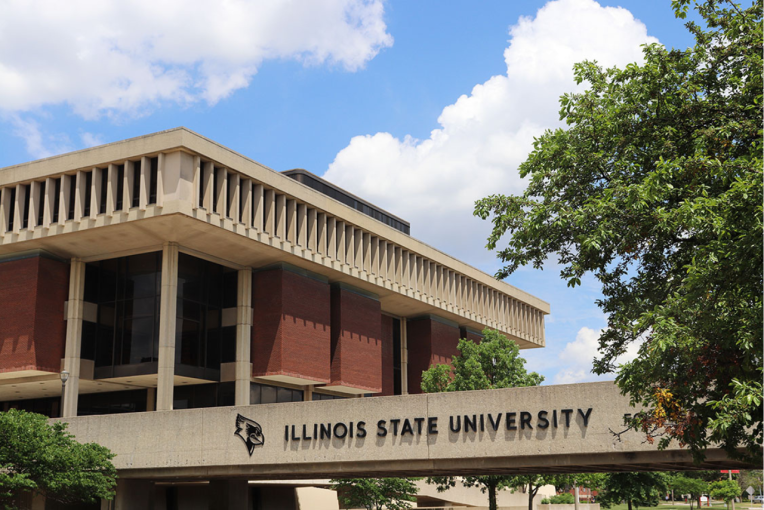This week we celebrate Open Education Week, an organized annual effort to recognize the benefits of open educational resources, which are digital teaching and learning materials that are free to read and modify. The cost of textbooks is a stress point for students at Illinois State University, causing them to make hard choices when course materials are unaffordable and potentially affecting their ability to succeed in those courses. Open textbooks are one strategy for addressing this issue.
There are several Illinois State faculty members who already use open textbooks. One of those is Dr. Christopher Hamaker, associate professor of chemistry. He uses a textbook published by OpenStax, based at Rice University. The book is free to read online and download as a PDF, or students can order a copy at the cost of printing. It was written and revised by academics, has undergone peer review, and includes instructor and student resources such as lecture slides and a solutions manual.
In the following Q&A, Hamaker discusses his motivations for and experiences with using an open textbook:
Why did you decide to use this open textbook? What was your process for selecting this book?
In fall 2021, I was teaching CHE 141, the second course of the general chemistry sequence. The instructor for CHE 140 the previous terms had been using an integrated online platform and text that I honestly didn’t like very much. Previously, I had been using a “traditional” textbook that I really liked that was relatively inexpensive. However, the biggest limitation was students doing practice problems. I would assign “recommended” end-of-chapter problems from the textbook, but students would honestly admit that they did very few, if any, of the suggested problems. I was looking for a way to encourage students to do more homework and didn’t want the students in CHE 141 to have to purchase a textbook. I found an online homework/quizzing platform (Chem101, now Aktiv) that was tied directly to the OpenStax General Chemistry textbook. After reviewing the online text, I was very impressed. It was the second edition of the OpenStax Chemistry, which was much improved over the first edition. Therefore, the cost to the students was the cost of the homework site access (about $35); print copies of the OpenStax text are also available for purchase (which some students do purchase) for a reasonable price, which was a plus. I have really grown to like the organization of the OpenStax text, which is a little different than the previous text I had used. I considered several options, but I liked the cost, flexibility, and quality of the combination I ultimately chose.
How have your students responded to the open textbook?
Response has been positive. Many students prefer to read their texts on tablets, laptops, or other devices, and the questions in the online system have direct links to the electronic version of the text if they have questions or need further review. Most students in CHE 140 and CHE 141 are not chemistry majors, so not being “stuck” with an expensive textbook is a plus for them.
What advice do you have for other faculty thinking about adopting an open textbook?
There are many quality, open-source and/or online texts available. With the cost of college increasing, I highly encourage faculty to look into quality open textbooks.
————-
Are you a faculty member interested in exploring ways to integrate open and affordable resources into your courses? A good starting place is your subject librarian or the scholarly communication librarian at Milner Library. Librarians can help you search for materials, address any questions or concerns about using alternative textbooks, and discuss ways to adopt these resources to achieve your learning objectives while saving students money.

